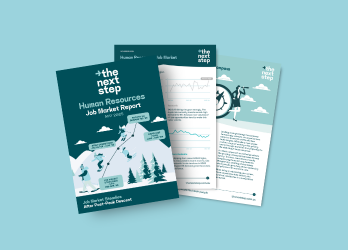Managing Psychosocial hazards in the workplace

New WHS legislation is placing a greater emphasis on employers’ responsibilities to prevent and manage psychosocial hazards in the workplace. Psychosocial hazards involve the design or management of work that increase the risk of stress and which can lead to psychological or physical harm.
Read on to learn how Human Resources professionals can better understand and improve the management of psychosocial hazards within the workplace.
What are workplace psychosocial hazards?
Psychosocial hazards are factors in the design or management of work that increase the risk of work-related stress and which can lead to psychological or physical harm. They can include:
- Role-related hazards – These might include low job control, poor role clarity, high or low job demands.
- Management-related hazards - Poor supervisor support and low levels of reward and recognition.
- Site-related hazards - Poor environmental conditions, or remote/isolated work.
- Organisation-related hazards - Inadequate organisational justice, or poor organisational change management.
- Relationship-related hazards - Poor workplace relationships including interpersonal conflict, bullying, harassment (including sexual harassment),
- Incident(s)-related hazards – Exposure to traumatic incidents, exposure to violence and aggression
Many workplace hazards may be interrelated. Impacts can vary according to individual people and/or can change over time.
How can employers manage psychosocial hazards?
The OHS Act requires employers to provide a safe work environment, which includes managing hazards and risks associated with both physical and psychological health.
Different frameworks exist, but often include pillars such as:
- Intervene early
- Mitigate illness
- Promote the positive
- Prevent harm
Safe Work Australia has a freely available code of practice for managing psychosocial hazards. Australia’s states and territories also have guidelines and resources to support mentally healthy workplaces including the NSW, WA, VIC, TAS and QLD governments.
Acheiving impact
TIn a recent Next Step webinar on psychosocial risk, industry experts recommended looking beyond legislated requirements and seeking meaningful improvements with impact.
Demystifying psychosocial risk, using plain language to talk about mental health and asking simple questions can be a good way to start.
Here are some practical questions to help you manage psychosocial hazards in your workplace:
- Where do you hold data relating to the psychological health of your organisation? Collaborate across functions to consolidate WHS and HR data.
- What are the recognised risks across your organisation? Start with common, well-known risks, or those which have the potential to cause significant harm.
- How can you start to filter and prioritise these psychosocial risks? Put a framework in place and have a clear set of priorities.
- What can you do to mitigate these risks? Use evidence-based resources that not only identify, but also evaluate and respond to risks.
- Will your proposed measures genuinely improve people's experience of work? Let genuine care drive you. Put people first and strive for real impact.
- How can you scale up your response and manage risk at an enterprise level? Can you identify risks by persona groups? Support line leaders as a first line of defence. Seek impactful and repeatable changes.
For more practical steps and resources read 10 steps for managing psychosocial risk written by our sister organisation, specialist HSE recruitment agency The Safe Step.
Take a sophisticated approach to job design
Role related hazards can influence whether people feel bored and apathetic; stressed and fatigued; or engaged and highly motivated at work. These factors can be enhanced as the way we work changes.
The SMART work design model is one of many resources available to guide the design of motivating and meaningful work.
To help mitigate psychosocial hazards in the workplace Human Resources teams should invest in training to improve their job design capabilities within Human Resources teams.
Employees can also be involved in the process. Support them to engage in role crafting to improve their own experience of work.
Assessing & improving psychosocial safety
There are a large number of commercial tools available to help you manage psychosocial safety. Simplistic approaches focus on identification and awareness. More sophisticated approaches evaluate impact, then implement and review control measures. Seek expert advice to understand the different metrics and approaches available.
Resources include the Copenhagen Psychosocial Questionnaire (COPSOQ), the Thrive at Work and People at Work frameworks and Flourish DX.
How can we help?
Do you need professional help developing or implementing a wellbeing strategy in your workplace? We can recruit HR professionals with wellbeing experience, or specialist wellbeing health and safety professionals (either on a permanant or consultant basis).
Or, if you yourself are feeling burnout or working in a toxic culture then it may be time to make a move elsewhere. We have a range of HR job opportunities available including a number that are not advertised on the open job market. Please get in contact with our team to discuss the next step in your career.
Date published : 09/11/2022



